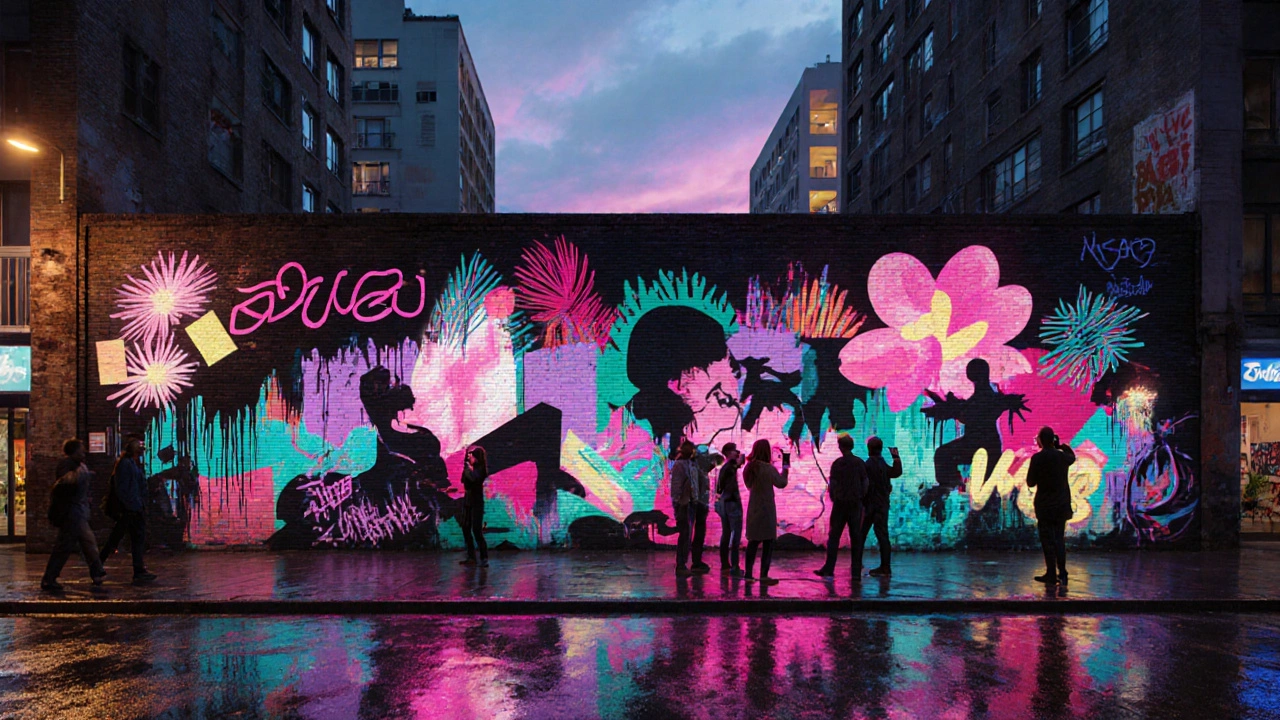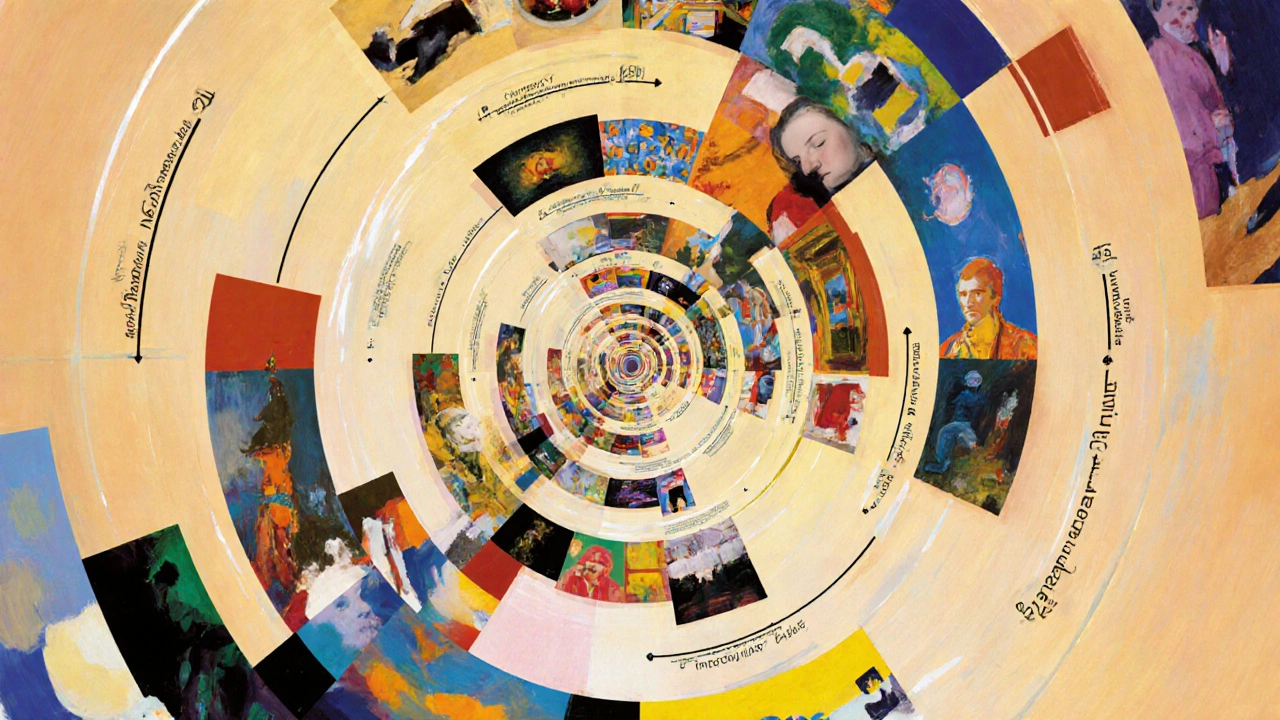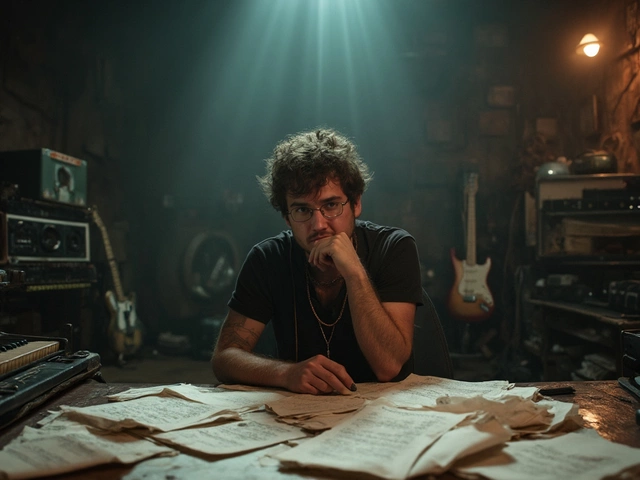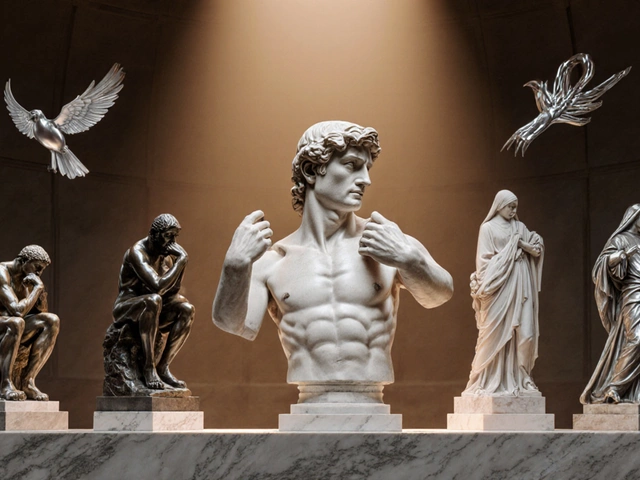Modern art has a way of pulling you into bold colors, strange shapes, and ideas that still feel fresh decades later. When you hear the question “Who is the famous artist in modern arts?” you’re probably looking for the names that defined the movement and still dominate museum walls today.
What Is Modern Art?
Modern Art is a period that stretches roughly from the 1860s to the 1970s, marked by a break from classical representation and an embrace of experimentation. Artists tossed out traditional rules, introduced abstraction, and let personal expression take center stage. The era covers everything from Impressionism’s fleeting light to Pop Art’s commercial satire.
How Do We Judge “Famous” in Modern Art?
Fame isn’t just about name‑recognition; it’s about influence, market presence, and lasting presence in public collections. An artist who sparked a new visual language, whose work sells at auction for millions, and whose pieces sit in institutions worldwide usually earns the “famous” badge.
Key Figures Who Define Modern Art
Pablo Picasso (1881‑1973)
Picasso’s Cubist experiments reshaped how we see form. Works like “Les Demoiselles d’Avignon” still dominate art‑history classes, and his market values regularly break records at auction.
Jackson Pollock (1912‑1956)
Pollock’s drip paintings turned the canvas into a stage for physical performance. “Number 31” illustrates how chaos can become a calculated rhythm, making him a pillar of Abstract Expressionism.
Andy Warhol (1928‑1987)
Warhol turned everyday consumer items into high art, blending celebrity culture with silkscreen technique. His Campbell’s Soup cans and Marilyn Monroe portraits are instantly recognizable worldwide.
Mark Rothko (1903‑1970)
Rothko’s large color fields aim to evoke pure emotion without representational distraction. Walking into a Rothko painting feels like stepping into a glowing, contemplative space.
Georgia O'Keeffe (1887‑1986)
Often called the “Mother of American Modernism,” O’Keeffe magnified flowers and desert scenes into iconic symbols of sensuality and landscape.
Kazimir Malevich (1879‑1935)
Malevich introduced Suprematism, a movement that reduced art to basic geometric shapes and pure feeling. His “Black Square” challenged everything that came before it.
Jean‑Michel Basquiat (1960‑1988)
Basquiat merged graffiti with fine art, using bold symbols and social commentary to voice the experience of urban America. His works now command multi‑million dollar prices.
Quick Comparison of Leading famous modern artists
| Artist | Born‑Died | Signature Style | Iconic Work |
|---|---|---|---|
| Pablo Picasso | 1881‑1973 | Cubism | Les Demoiselles d’Avignon |
| Jackson Pollock | 1912‑1956 | Abstract Expressionism (drip) | Number 31 |
| Andy Warhol | 1928‑1987 | Pop Art | Marilyn Diptych |
| Mark Rothko | 1903‑1970 | Color Field | No. 61 (Brown Black Orange Yellow) |
| Georgia O'Keeffe | 1887‑1986 | Modernist Realism | Red Canna |
| Kazimir Malevich | 1879‑1935 | Suprematism | Black Square |
| Jean‑Michel Basquiat | 1960‑1988 | Neo‑Expressionist Graffiti | Untitled (1982) |
Why These Artists Still Matter Today
Each figure didn’t just produce a famous painting; they reshaped how art interacts with society. Picasso’s deconstruction opened doors for digital abstraction. Warhol’s brand‑centric approach predicts today’s influencer culture. Basquiat’s street‑art origins foreshadow the rise of urban murals and NFTs.

How to Dive Deeper Into Modern Art
- Visit a local museum with a strong modern‑art wing - the Vancouver Art Gallery often rotates Picasso and Warhol shows.
- Explore virtual tours from institutions like MoMA or the Tate Modern; they offer high‑resolution close‑ups of Rothko’s color fields.
- Read a concise biography - “Picasso: A Biography” by Roland Penrose or “Warhol” by Wayne Koestenbaum are great starts.
- Join a discussion group or online forum focused on modern‑art collecting; you’ll hear fresh perspectives on market trends.
Common Pitfalls When Learning About Modern Artists
People often assume modern art is “just random splashes.” That belief skips the intentional experimentation each artist pursued. Don’t judge a work solely by its price tag; look for the ideas it provokes. Finally, avoid “name‑dropping” without context - knowing why an artist mattered is more valuable than simply reciting a list.
Who is considered the father of modern art?
Many scholars point to Pablo Picasso because his Cubist experiments shattered traditional perspective and influenced countless later movements.
What makes an artist “famous” in modern art?
Influence on peers, presence in major museum collections, and high auction results all contribute to lasting fame.
Where can I see works by these modern artists in Canada?
The Vancouver Art Gallery, the Montreal Museum of Fine Arts, and the Art Gallery of Ontario regularly feature rotating modern‑art exhibitions.
How does Pop Art differ from Abstract Expressionism?
Pop Art, championed by Andy Warhol, uses recognizable commercial imagery, while Abstract Expressionism, seen in Jackson Pollock’s drip works, focuses on spontaneous, non‑representational gestures.
Are modern artists still shaping today’s art market?
Absolutely. Their techniques and ideas influence contemporary creators, and their works remain benchmarks for valuation and exhibition standards.



